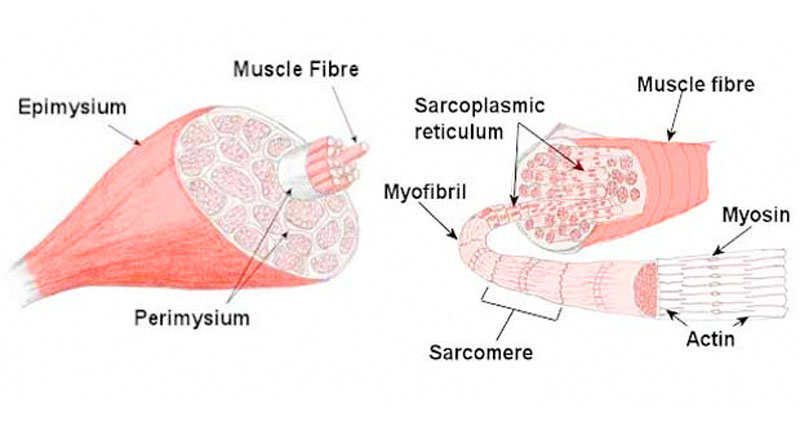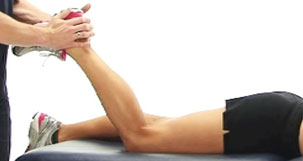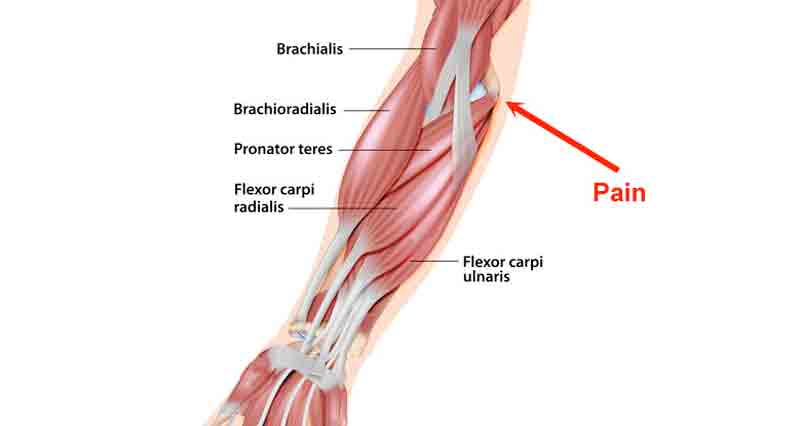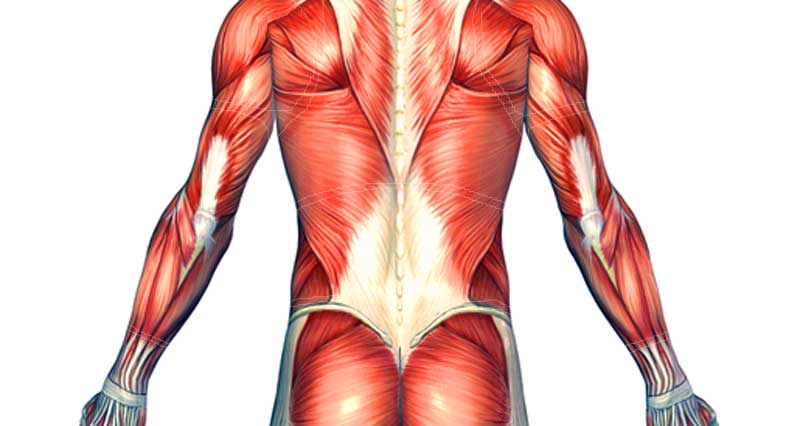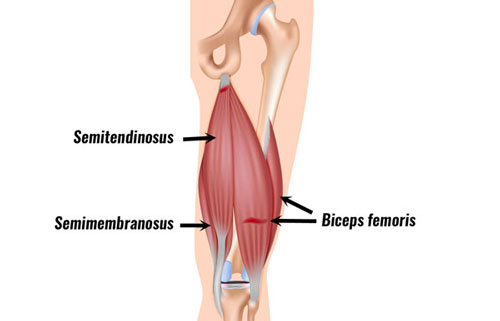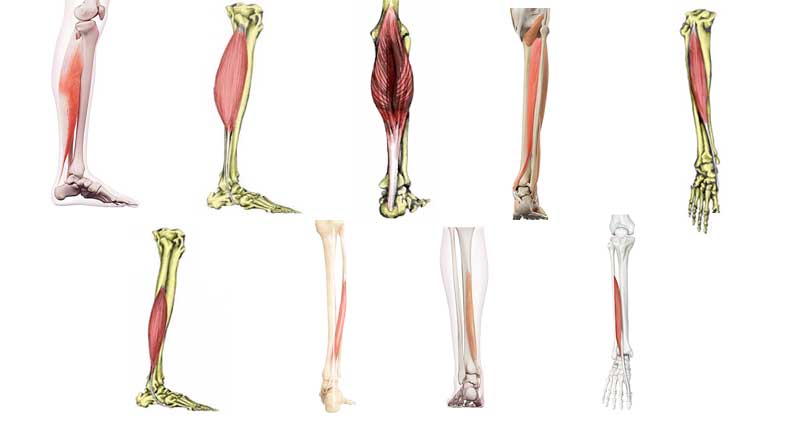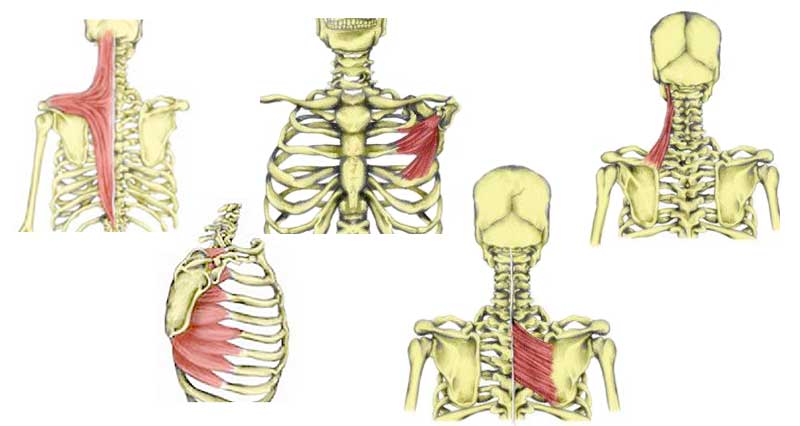A muscle strain, pulled muscle, torn muscle, or muscle rupture is simply a tear of any muscle in the human body. They range from mild to severe and occur in the muscle belly itself, or within the tendons which joint the muscle to bone. Here we give an overview of the common muscle strains in sport.
Common muscle strains
The following injuries are some of the more common muscle strains in sport:
- Calf strain – a tear of the calf muscle, usually the larger gastrocnemius muscle at the back of the lower leg.
- Thigh strain – a tear of one of the quadriceps muscles at the front of the thigh.
- Hamstring strain – also called a pulled hamstring is a tear of one of the three hamstring muscles at the back of the lower leg.
- Back muscle strain – a tear of any of the muscles in the lower back.
- Triceps strain – a tear of the triceps muscle at the back of the upper arm.
- Plantar fascia strain – in the arch of the foot.
- Abductor hallucis strain – on the inside area of the foot arch.
What is a muscle strain?
A muscle strain is a tear of a muscle, not to be confused with a sprain, which is injury to a ligament (joins bone to bone).
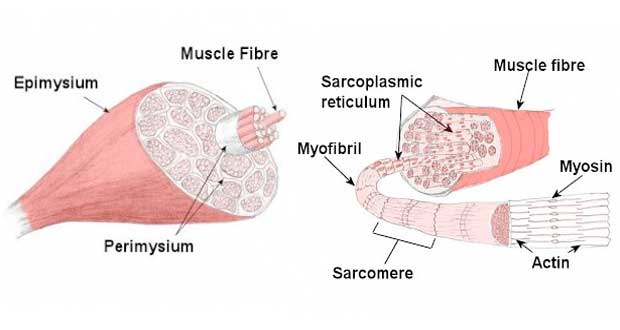
Skeletal muscle is made up of bundles of muscle fibres, which are surrounded by connective tissue, known as fascia. Muscle fibres are made up of bundles of myofibrils which in turn are constructed of actin and myosin filaments. A muscle strain is a tear to any of the structures within the muscle, including tendons and blood vessels.
- Read more on skeletal muscle structure.
Muscle strain recovery time
Muscle strain recovery time depends on which muscle tears and severity. In order to help get an idea of a pulled muscle recovery time, injuries are categorised in various ways.
- Severity
- Location within the muscle
- How it occured/mechanism of injury
A pulled muscle can take a few days to many months to heal.
- Learn more about Muscle Strains: Tissue Healing Process
Grading muscle strains
A torn muscle is often categorized or graded 1 to 3 depending on severity. A grade 1 strain is a mild strain and grade three is the most severe.
A grade 1
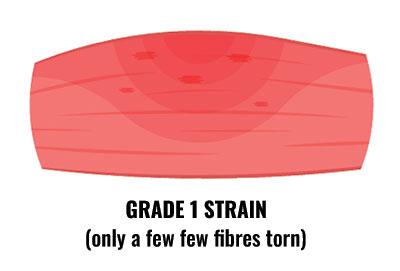
- A mild strain with only a small number of fibres torn.
- Local pain or a light twinge at the time of injury.
- Little or no loss of movement or strength.
- Little or no swelling.
Grade 2
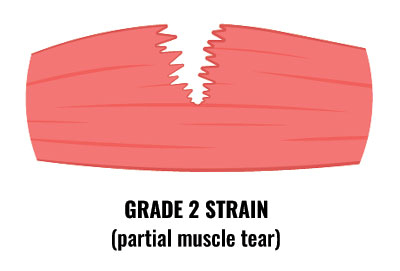
- A grade 2 is more severe, with a greater number of torn muscle fibres.
- You will often feel a sudden sharp pain at the time of injury.
- Swelling is likely and you will be unable to continue exercising.
Grade 3
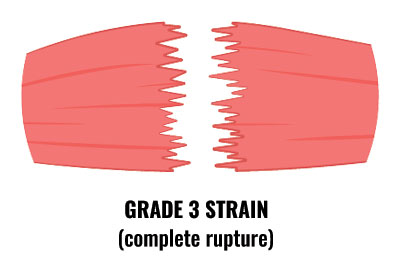
- Involve most or all of the muscle fibres torn.
- Severe pain and swelling.
Location of the muscle tear
This method classifies muscle strains depending on where specifically in the muscle the tear occurred.
Proximal musclular tendinous junction
- This is a tear at the point in the muscle where the tendon joins the muscle (MTJ). More specifically at the proximal end of the muscle.
- This is towards the top of the muscle, or the end nearest the origin.
- For example, a thigh strain can occur at the muscular tendinous junction.
Muscle belly strains
- These occur within the main part of the muscle itself.
- Can also be proximal (towards the top) or distal (nearer the end).
- Involve damage to muscle fibres, and/or the fascia surrounding the muscle.
Distal muscle strains
- These involve injury to the muscle nearer the distal part, where the muscle inserts onto the bone.
Treatment for muscle strains
Immediate first aid for any suspected torn muscle is to apply the PRICE principles (protection, rest, ice, compression and elevation).
- Protection – stop playing or training and protect your injury from further damage.
- Rest – continuing to train or compete with a torn muscle prevents healing.
- Ice – apply cold therapy or ice to reduce pain and inflammation.
- Compression – apply a compression bandage or support to prevent swelling.
- Elevation – elevate the injured limb. Gravity helps tissue fluids and swelling drain away from the site of injury.
Subacute stage:
- After the initial acute phase has passed, the aim is to restore normal pain-free range of motion and strength levels.
- Massage helps by aiding blood circulation and relaxing the muscle tissues.
Late stage:
- Involves gradually increasing the load through the injured structure through strengthening exercises.
- Finally sports specific exercises bridge the gap between basic rehabilitation and full competition fitness.
References & further reading
- O’Donoghue DO. Treatment of injuries to athletes. Philadelphia: WB Saunders, 1962.
- Chan O, Del Buono A, Best TM, et al. Acute muscle strain injuries: a proposed new classification system. Knee Surg Sports Traumatol Arthrosc 2012;20(11):2356–62.
- Pollock N, James SL, Lee JC et al. British athletics muscle injury classification: a new grading system. Br J Sports Med 2014;48(18):1347–51.

